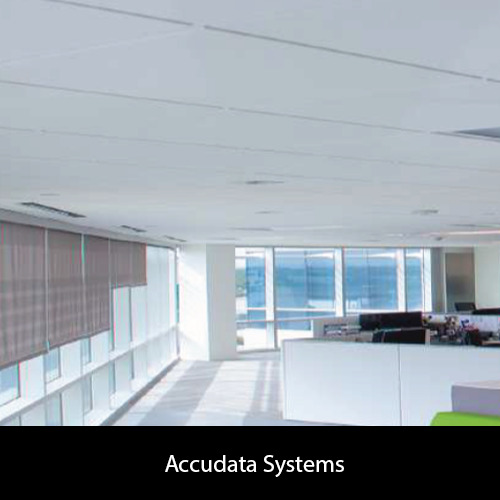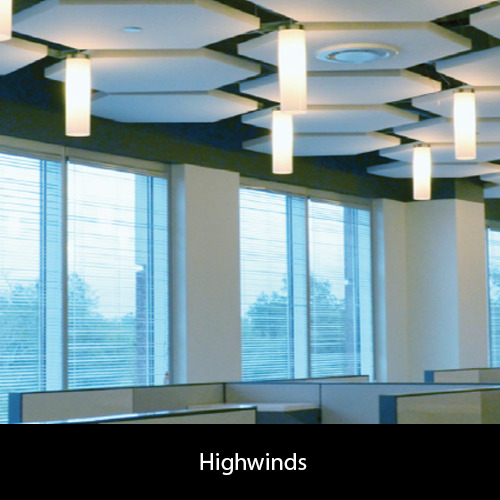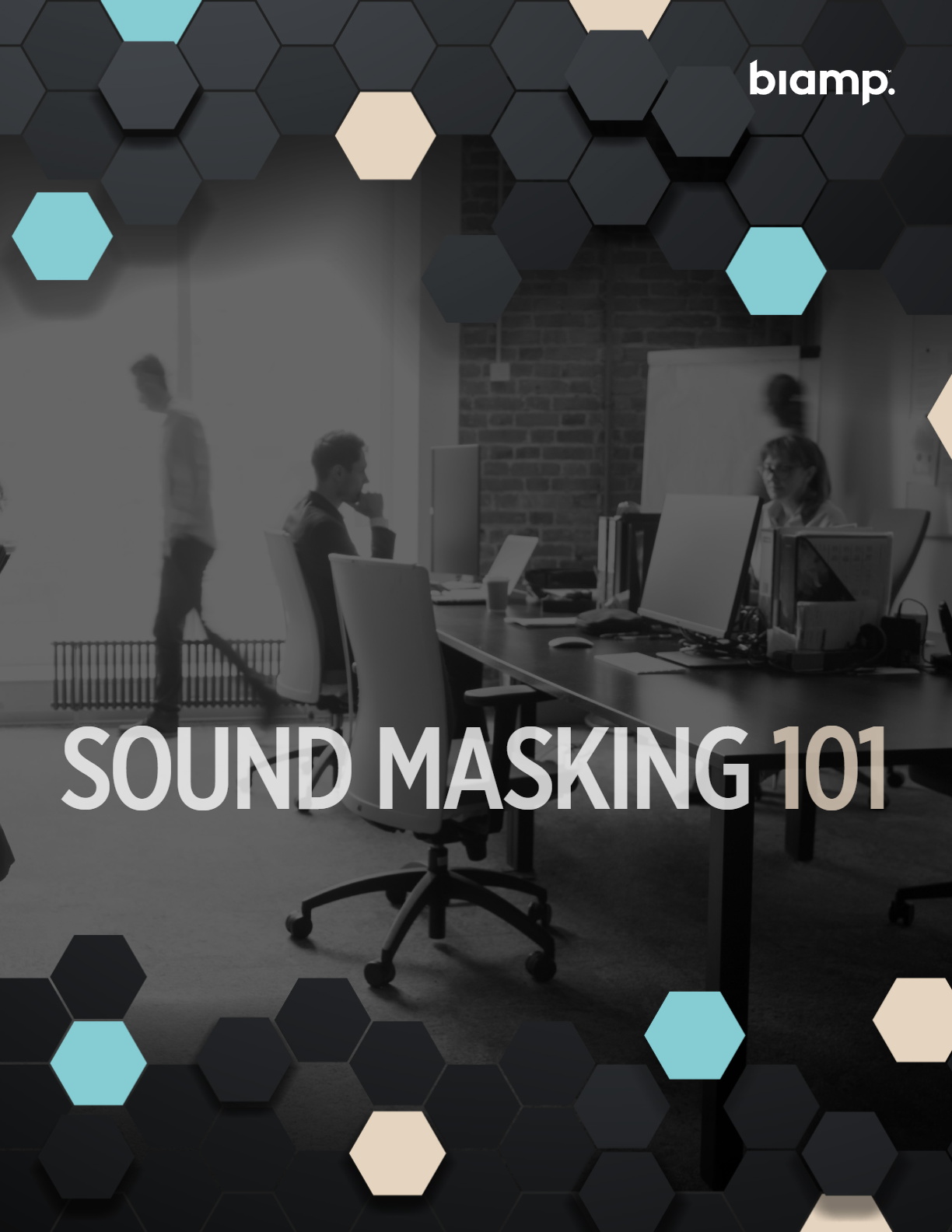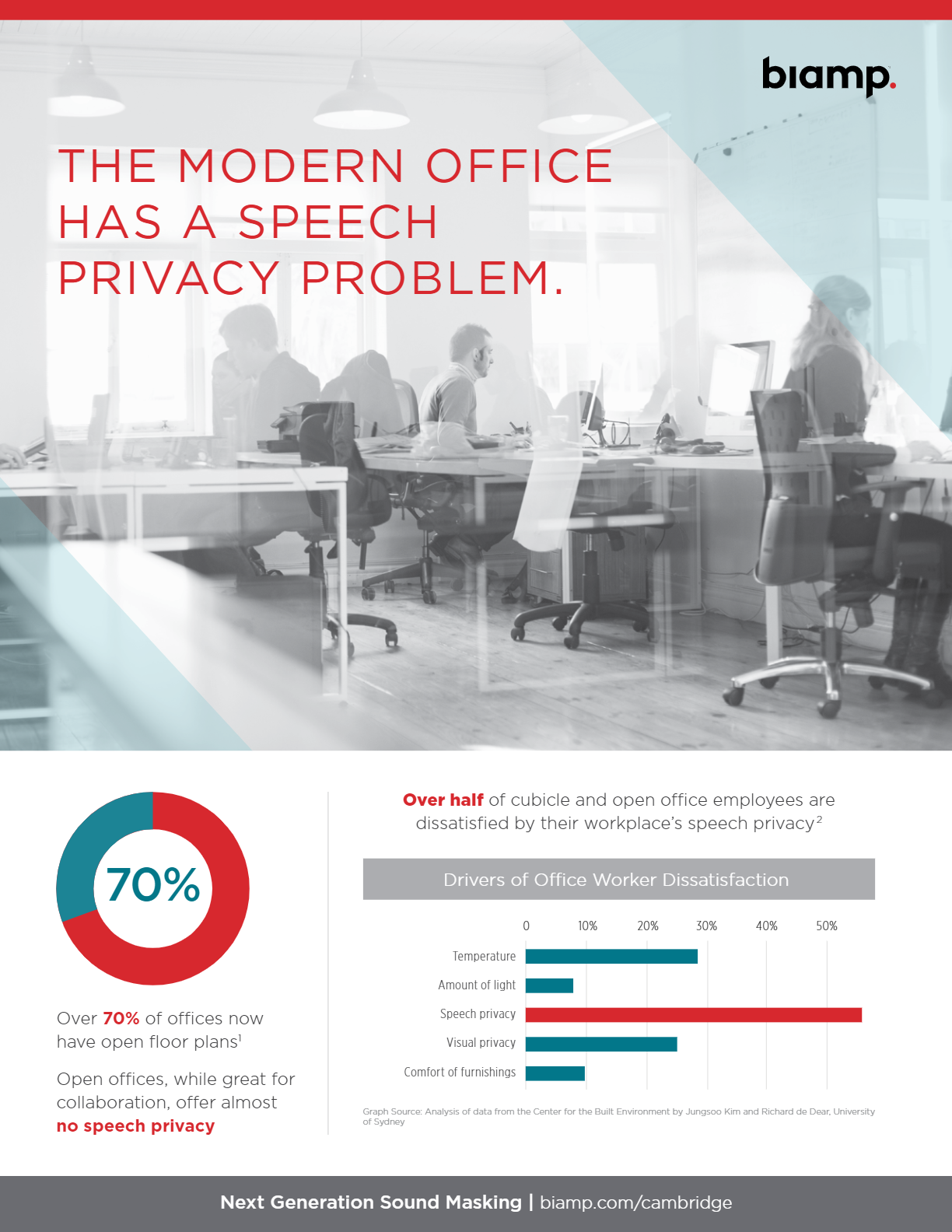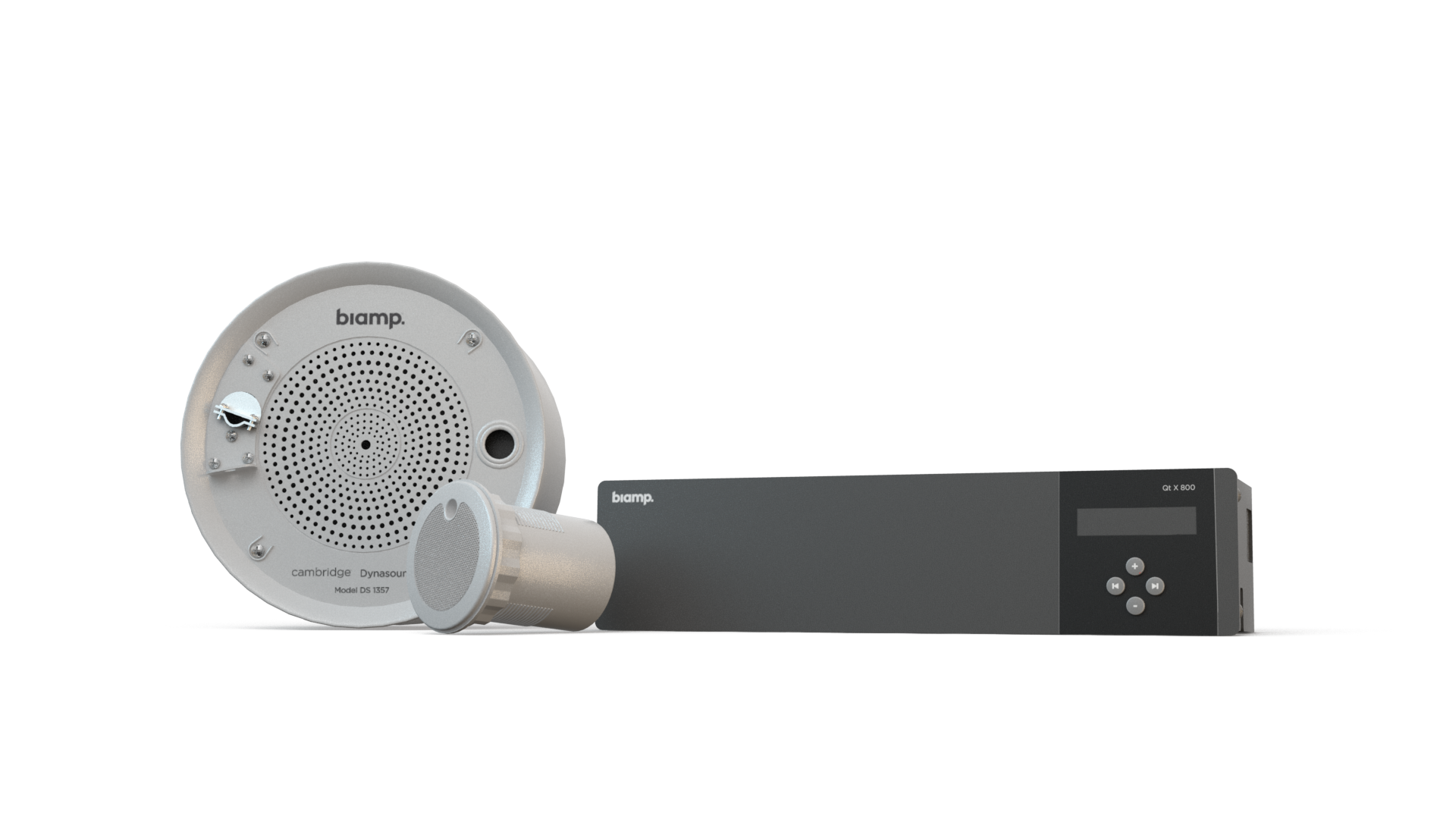How Does Sound Masking Work?
Sound masking is a specially tuned ambient background sound that targets the same frequency as human speech, reducing its intelligibility.
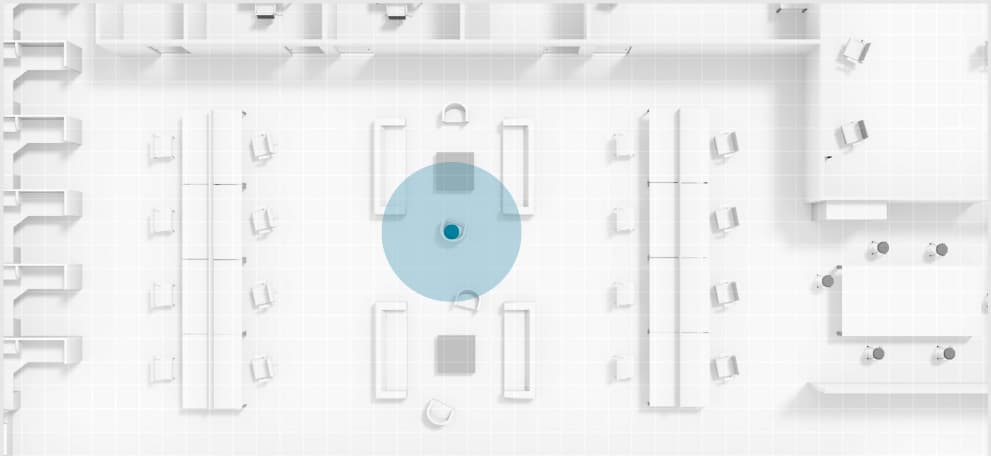
Sound masking does not cancel sound, but it makes conversations heard at a distance more difficult to understand, and thus less likely to distract.
Simply put, conversations that would normally distract someone at a distance of over 15 feet in the workplace will be notably less intelligible or noticeable. Face to face collaboration with fellow employees is not impacted, as conversations at a distance fade into the background and speech privacy is protected.
How Is Sound Masking Deployed?
Sound masking systems are installed by certified professionals specially trained in sound masking and acoustics. There are two main approaches to deploying sound masking.


How is Sound Masking Different Than White Noise?
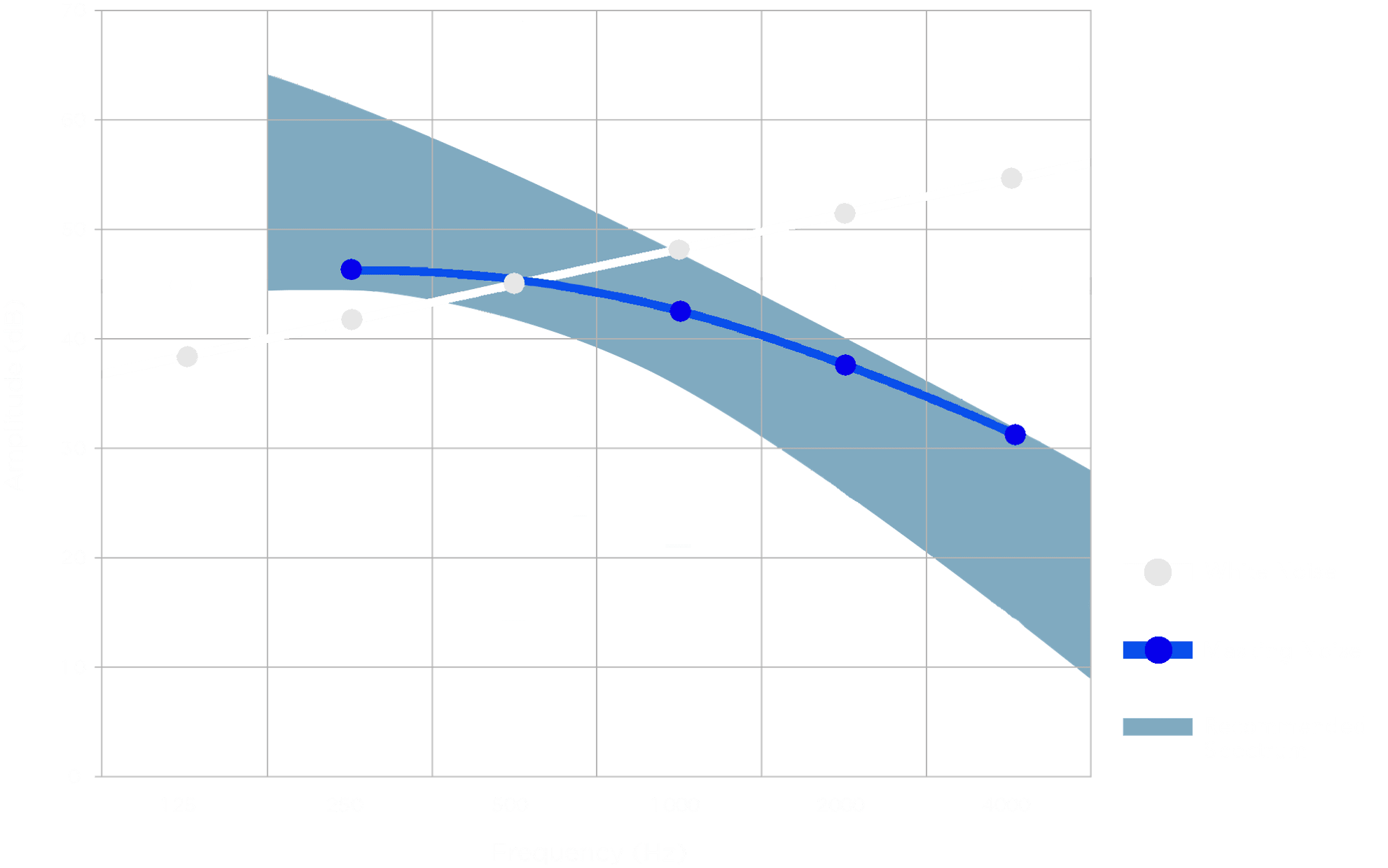
Sound masking is more comfortable and effective. Sound masking is often referred to as “white noise” but as you can see on the chart on the left, the sounds are very different.
Sound masking is specifically engineered to match the frequencies of human speech and to sound comfortable to the human ear. When implemented properly, sound masking should just fade into the background “hum” of a workplace.
Conversely, the frequency of white noise would be extremely irritating if it were amplified to a volume that would be effective for masking human speech — think of loud AM radio static.
Sound Masking Protects Speech Privacy
Speech privacy refers to the ability of an unintended listener to understand another person's conversation.
Sound Masking Increases Productivity






